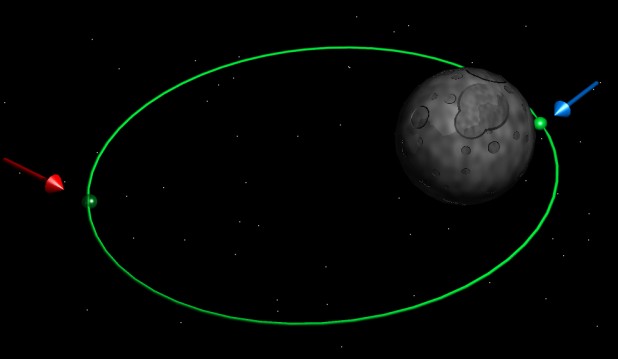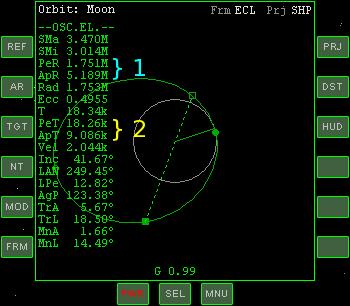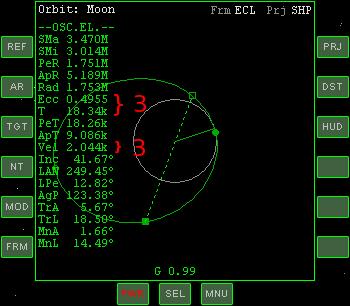
Playback srenario avaliable here (zip format) or here (7zip SFX)
The controllable Shuttle-A (SH-02) is parked on a similar orbit, 7 km away if you want to do the tutorial yourself
Ok. Got the .scn? So *let's get it on!*
Right - time for some more theory.
The graphic for your orbit should now be quite elongated - you can modify the display of OrbitMFD to make it easier to read by using [right shift M] or MOD button repeatedly.
When changing the shape of our orbit there are two points of interest...
And there are two numbers listed on OrbitMFD directly related to these two points.

Trap for beginners : PeR and ApR are measured from the center of the body, not from it's surface. If you don't pay attention, you may create a new crater on the moon... I recommend changing the distance display mode to Altitude [RShift D] or DST button what will change above values to PeA and ApA - altitudes from surface. The only thing you'll have to know now are atmosphere heights for planets and some moons but we don't care now since we are over Moon.
Two other number of interest are :
Almost every manouver related to changing the shape of your orbit is performed at one of these two points. OK, let's get out of the classroom for a bit.
A summary of what we have done so far : A prograde burn at periapsis increases ApA, and a prograde burn at apoapsis increases PeA. So to climb from a low circular orbit to a higher one, we need to make two burns - one to increase ApA to the required value, and one to bring PeA up to the same value.
Three more numbers of interest on OrbitMFD:

Take a note of your current velocity and period - they should be around 970m/s and 34,000s (that's about 9.5 hours).
Right - how do we get back down again? It should come as no surprise that we will be doing retrograde burns.

Take a look at your new velocity and period - 1656m/s and 6700s (around 1.9 hours).
Even though to lower our orbit we used retrograde burns (which means we slowed down...), we are now going much faster...this result is very counter intuitive, but will be quite important later on.